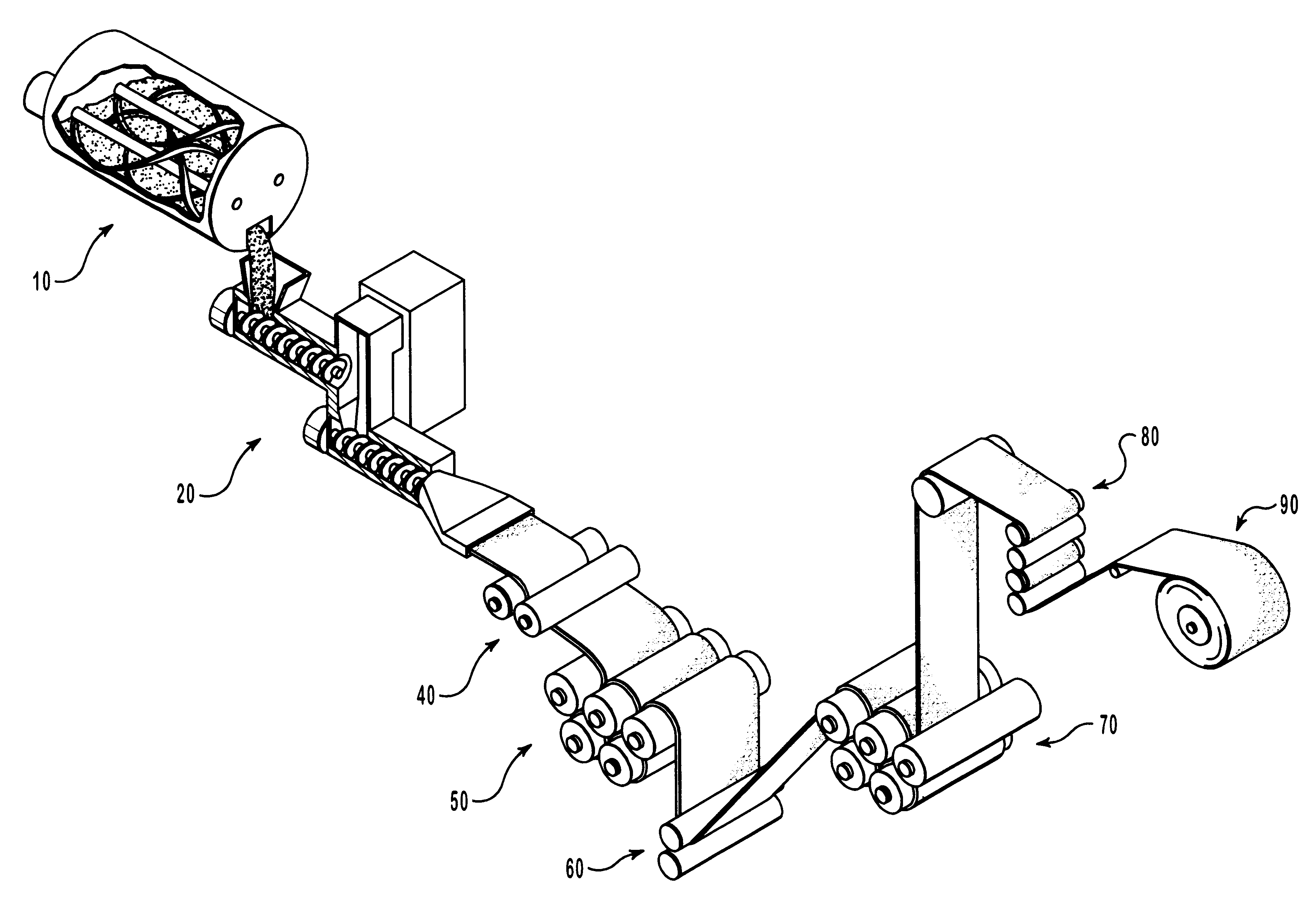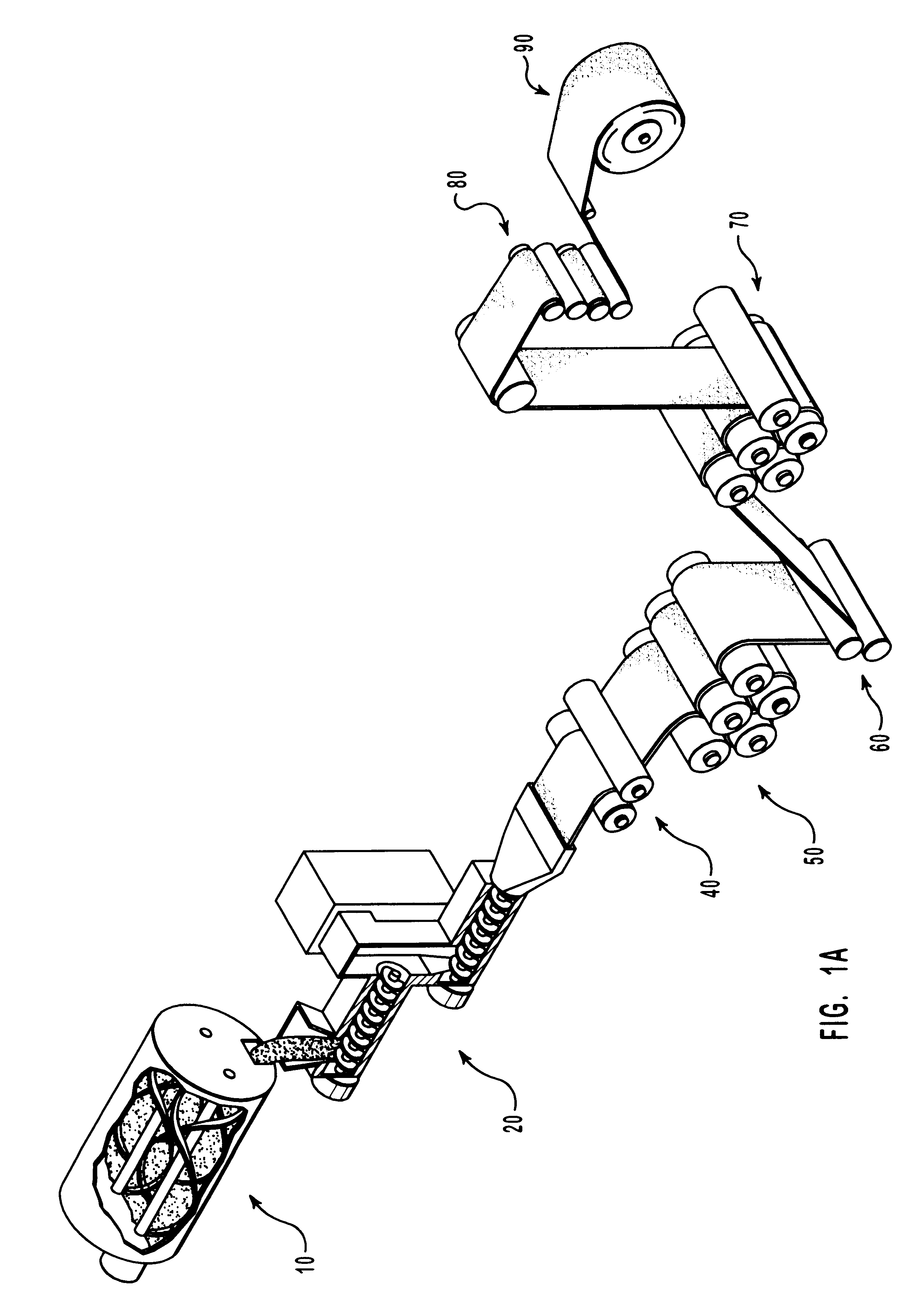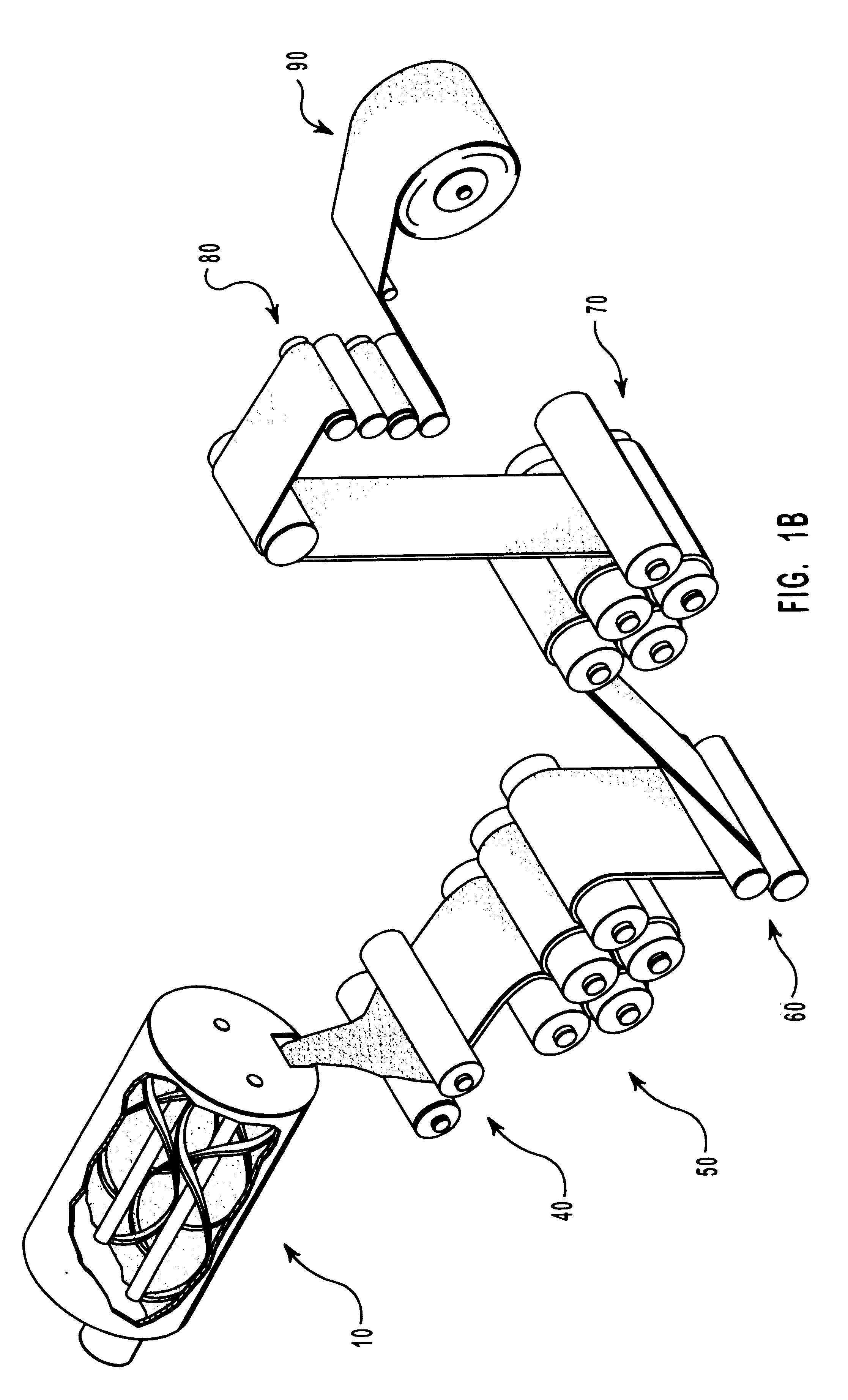Methods for the manufacture of sheets having a highly inorganically filled organic polymer matrix
a polymer matrix and organic polymer technology, applied in the field of sheets manufacturing, can solve the problems of health problems of those who must handle, paper, paperboard, plastic, etc., and achieve the effect of low cos
- Summary
- Abstract
- Description
- Claims
- Application Information
AI Technical Summary
Benefits of technology
Problems solved by technology
Method used
Image
Examples
examples 7-12
Highly inorganically filled sheets were prepared from moldable mixtures that include the following components:
The fiber that was used in each of these examples was southern pine. The water, Tylose.RTM. FL 15002, and fibers were first mixed for 10 minutes in a Hobart kneader-mixer. Thereafter, the calcium carbonate and hollow glass spheres were added to the mixture, which was mixed for an additional 6 minutes under low shear. The particle packing density of the combined calcium carbonate and hollow glass spheres in each of these mixtures was 0.73, and the resulting mixtures had the following percentages by volume of the total solids of inorganic aggregate, respectively: 88.5%, 85.3%, 82.3%, 79.6%, 77.0%, and 74.5%.
The moldable mixtures were extruded using a deairing auger extruder through a 30 cm.times.0.6 cm die to form continuous sheets having corresponding dimensions of width and thickness. The extruded sheet was then passed between a pair of reduction rollers having a gap distanc...
example 13
Examples 7-12 were repeated in every respect except that 1.0 kg mica was substituted for the calcium carbonate. In all other respects the mixtures were prepared in substantially the same manner. Mica is a clay-like, plate-shaped natural mineral having an average particle size of less than about 10 microns. The particle packing density of the combined mica and hollow glass spheres in each of these mixtures was about 0.7, and the resulting mixtures had the following percentages by volume of the total solids of inorganic aggregate, respectively: 88.5%, 85.3%, 82.3%, 79.6%, 77.0%, and 74.5%. The plate-like shape of the mica yields sheets having glossier surface finishes.
example 14
The mix design and methods set forth in Example 13 were repeated in every way except that 0.25 kg of southern pine was added to the moldable mixture used to form the inorganically filled sheets. The final hardened sheets had a tensile strength of 14.56 MPa, a modulus of 2523 MPa, an elongation of 1.42% before failure in the strongest (machine) direction, and a tensile strength of 6.66% MPa and an elongation before failure of 0.93% in the weak (cross-machine) direction.
PUM
| Property | Measurement | Unit |
|---|---|---|
| yield stress | aaaaa | aaaaa |
| thickness | aaaaa | aaaaa |
| thickness | aaaaa | aaaaa |
Abstract
Description
Claims
Application Information
 Login to View More
Login to View More - R&D
- Intellectual Property
- Life Sciences
- Materials
- Tech Scout
- Unparalleled Data Quality
- Higher Quality Content
- 60% Fewer Hallucinations
Browse by: Latest US Patents, China's latest patents, Technical Efficacy Thesaurus, Application Domain, Technology Topic, Popular Technical Reports.
© 2025 PatSnap. All rights reserved.Legal|Privacy policy|Modern Slavery Act Transparency Statement|Sitemap|About US| Contact US: help@patsnap.com



